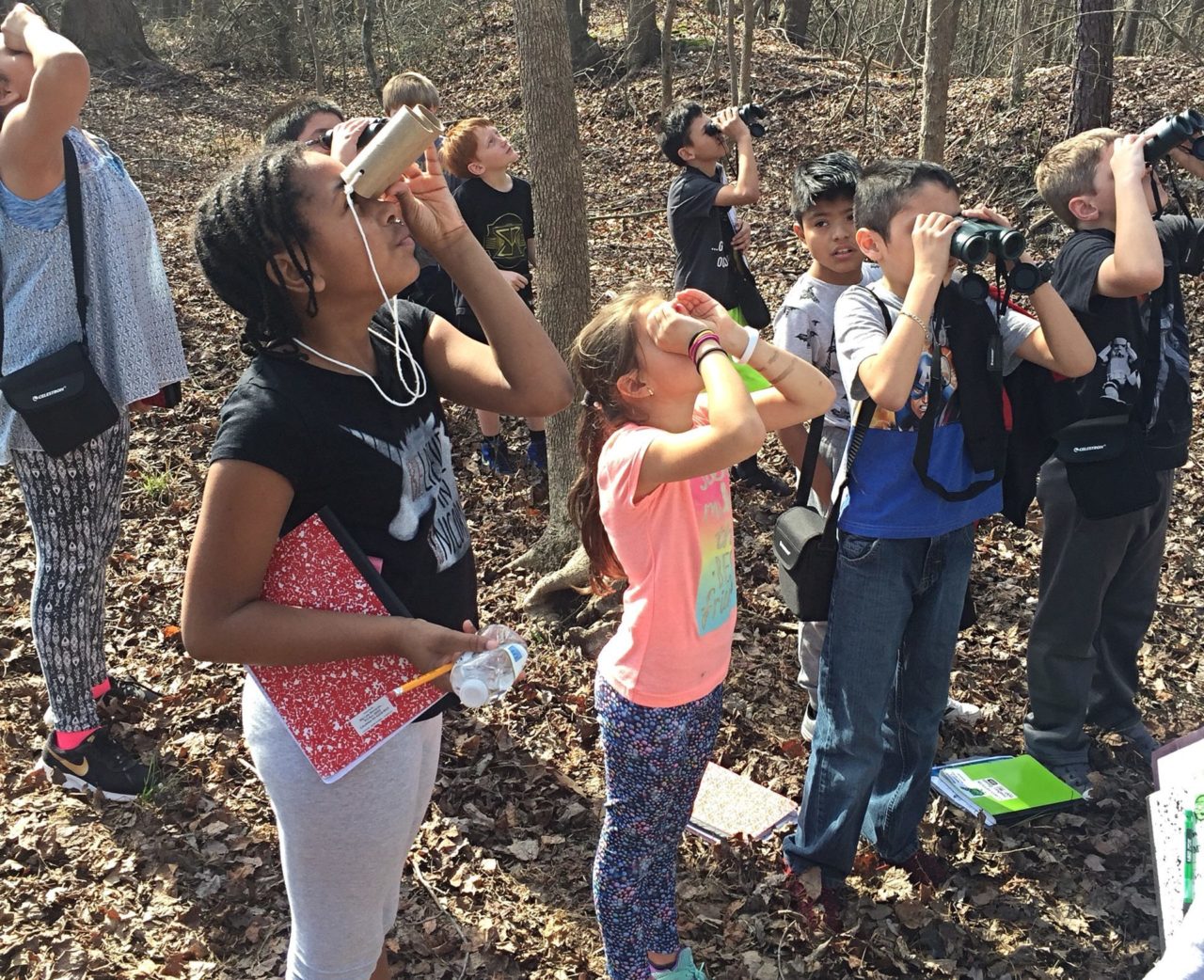For Educators
Birds Are a Powerful Educational Tool
Hundreds of teachers across grade levels and from around the world have used the Great Backyard Bird Count to connect their students to the natural world. Below are resources from the Cornell Lab’s K-12 Education Program and National Audubon Society to support you and your students in bird watching.
My 2nd grader participated in the GBBC event and loved it. It was a cold day but we just bundled up! He loves animals and loves learning about animals that are close to where we live. I think it was very well done!
Vizza Family
YES! You Can Do this with Any Group of Students
While eBird does not allow users under 13 years old to create personal accounts, educators can use group accounts. We recommend following these simple steps:
- Create an eBird group account for your class to submit and archive all sightings.
- Share group account details (email address and password) with students.
- Regularly check-in on the account and set-up a data-entry process that works for you and your students.
Explore this page to learn more about Group Counting.
Note: You can start entering bird lists at midnight local time on the first day of the count, anywhere in the world. Data entry remains open until March 1, but the information you enter should only be from the four days of the Great Backyard Bird Count.
More Resources to Support Participation
 How to do the Great Backyard Bird Count with Students
How to do the Great Backyard Bird Count with StudentsDiscover the excitement of participating in the Great Backyard Bird Count (GBBC). Join our K-12 Education team for a webinar to learn how to engage your class or youth group on.
 eBird Essentials for Educators
eBird Essentials for EducatorsThis PDF will guide you in using eBird in the classroom. eBird is the tool that we use for all Great Backyard Bird Count data entries.
 Explorer’s Guidebook
Explorer’s GuidebookGet kids outside and enjoying your backyard, neighborhood, and local parks. Take kids on a habitat scavenger hunt, create a sound map, and test bird ID skills with this adaptable activity book designed to be used by families, school groups, and…
 Audubon for Kids!
Audubon for Kids!This page aims to bring together activities from across Audubon’s national network of environmental educators

My name is Mike Schwindt, and I am a teacher on a native reserve in Northwestern Ontario. I had one student who I really wanted to see succeed, mainly because of how badly he wanted to succeed himself, but who just couldn’t seem to stay focused on any task for longer than a minute or two. While we were making the feeders in class, he paid a lot more attention than normal to what he was doing, and when we went to hang them up, he paid extra attention to where he put his, trying three or four spots before finding just the right spot. After school that day, I went around to check all of the feeders and who should I meet but my newly-focused student! He couldn’t wait until the next day to see birds at his feeder, so he had gotten off his bus at home after school, turned around, and walked back to check! I told him how happy I was to see how keen he was and watched his eyes widen as a chickadee landed on the feeder less than a meter behind my head!
Stay connected to the Great Backyard Bird Count.
By subscribing to stay connected to the Great Backyard Bird Count, you agree to receive communications from The Cornell Lab, Audubon, and Birds Canada. You may unsubscribe from any of the organizations' communications at any time.
